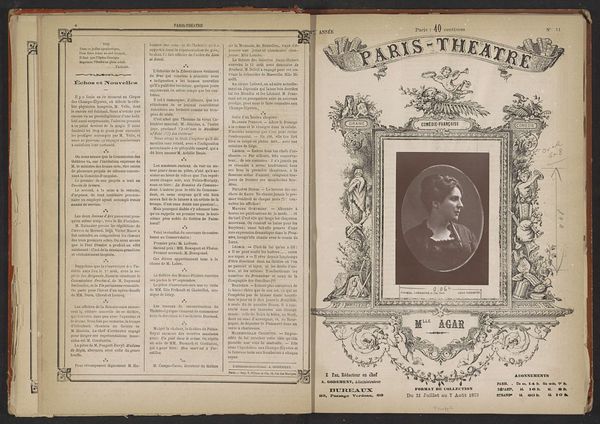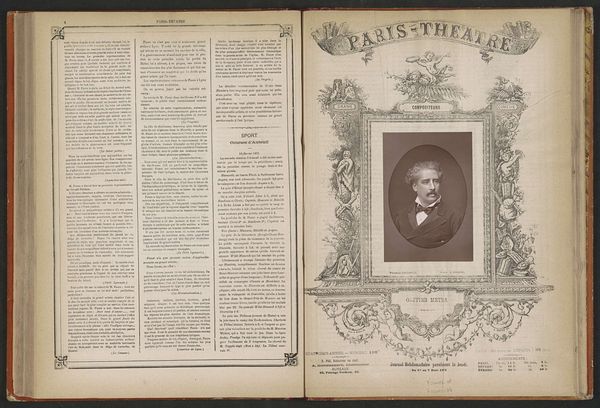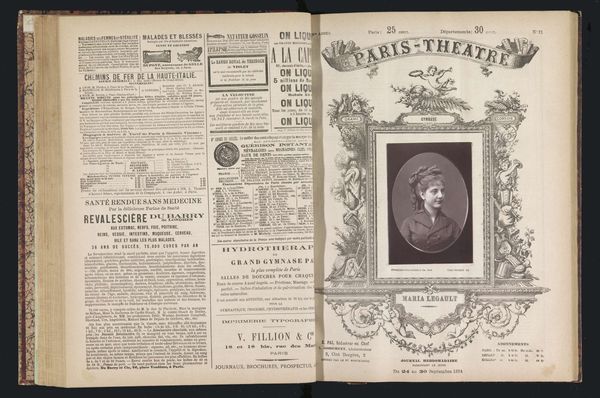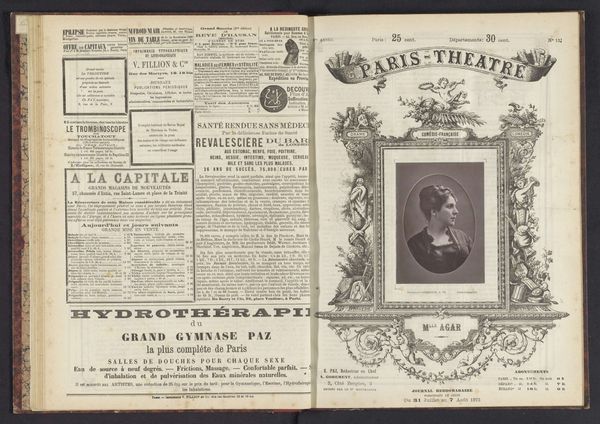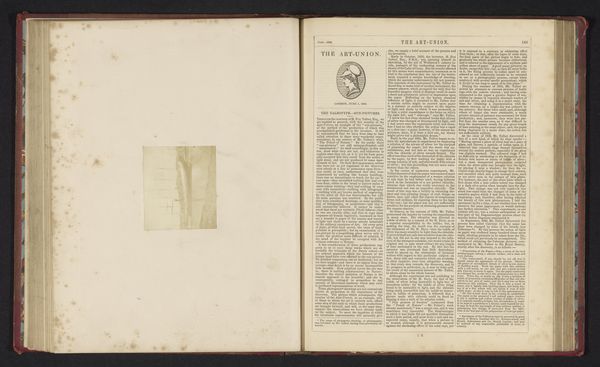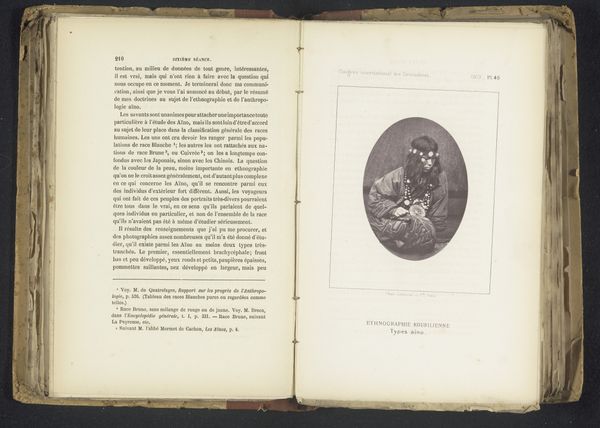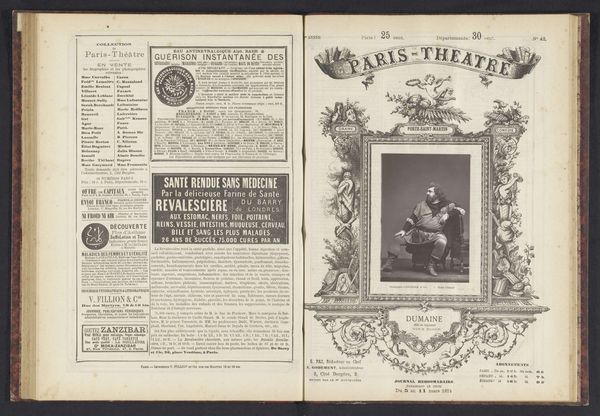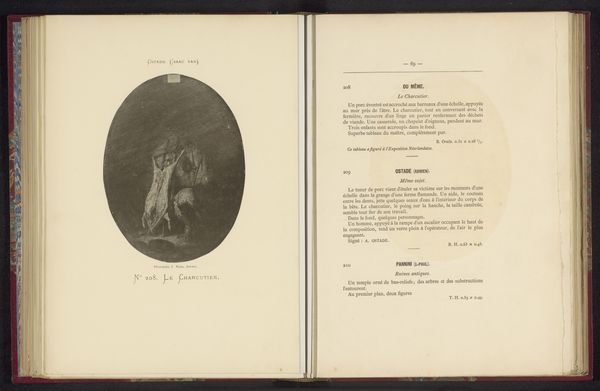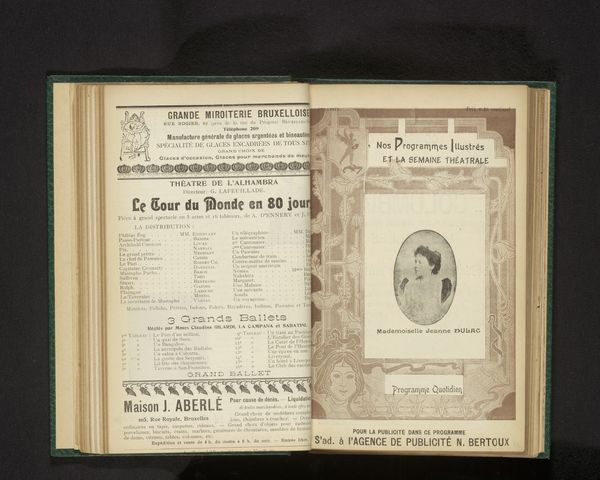
print, photography
#
portrait
# print
#
photography
#
coloured pencil
Dimensions: height 123 mm, width 87 mm
Copyright: Rijks Museum: Open Domain
Editor: Here we have Étienne Carjat's "Portrait of Jean-Sully Mounet," created before 1876. It's a photograph, presented as a print, currently residing here at the Rijksmuseum. The sepia tone lends it a very classical feel. What catches your eye most about its composition? Curator: Observe how the oval vignette focuses attention tightly on Mounet-Sully's profile. The crispness of the photographic image itself contrasts markedly with the elaborate, almost baroque, decorative frame within which it is set. Editor: I noticed that contrast as well! It’s quite striking, the way the severe portrait sits within such an ornate setting. Why that choice? Curator: Precisely. Consider the frame—a constructed space, delineating and containing. Now, observe the textures: the smoothness of the photographic print, the implied textures of the floral frame. These contrasting tactile elements create a dynamic tension within the work. Are these textures inherent to the work or representational of the subject’s character and social setting? Editor: That's interesting, because I would have thought the portrait and the surrounding printed embellishments would compete with each other for my eye. Curator: Perhaps, but what of the symmetry, here? Notice how the title aligns so deliberately at the lower centre of the oval image, and also notice the placement of decorative floral accents that creates a clear geometry and a focus on Mounet-Sully’s gaze. These considerations would influence any reading. Editor: I see your point. So, rather than clashing, the contrast actually heightens the impact of both the subject and the decorative setting? Curator: Precisely! The artwork is a masterclass in deliberate pairings to generate tension, rhythm, and engagement. It is very clear how Carjat controlled visual experiences. Editor: That's a much more nuanced way of seeing it! I'll definitely look closer at contrasts and symmetries from now on. Curator: Excellent! Always be attentive to how the forms and construction come together, which reveals the power of formal observation in grasping its artistic achievement.
Comments
No comments
Be the first to comment and join the conversation on the ultimate creative platform.

